After hearing plenty of "it's never this warm in winter, so don't get used to it" I thought, "waitaminute, don't we usually get a warm week or two in January?"
And it turns out that yes, in the last 20 years January has pretty reliably had some relatively warm days:
And it's not just the last 20 years - we've had reliably warm January days for as long as there have been records:
In the 1880s there were an average 5.7 days above freezing each January, and in the 1890s it was actually 9.7 days. January of 1893 spent almost the whole month above freezing - with several days at 6°C and 8°C - before dropping to a high of -40°C in its final week.
So Edmonton gets some warm days in the middle of winter, but does Edmonton gets chinooks?
I've tried to answer that question in an epic, 3-part series:
But those posts are all pretty lengthy. So here we'll try to cover some of the highlights, but as always full details are available in the links.
Warm Winter Days
If we look at the depths of winter - from December through February - these are the number of "warm" days that Edmonton gets each winter. During those three months we break 2°C about 25% of the time, and for 5°C it's about 11%.
Days above 10°C are relatively rare, though.
For days above 10°C we'll often get one or two during December-February, but there have been several years with none. But days above 8°C are pretty reliable, and going back to 1995 we've always had at least one day above 7°C.
Chinooks aren't just about warm temperatures though, but are also about how quickly things warm up:
Here are some of the largest day-over-day temperature changes Edmonton has ever recorded, where temperatures jumped up above 5°C and into melting.
There are some impressive swings in there, but it's tough to know how impressive they are without having something to compare against.
Compared to Calgary & Winnipeg
Here is the same data, but with Calgary, Winnipeg and Regina added for reference. (Regina was a late addition to this chart, because I didn't want to just keep picking on Winnipeg)
If we want to assume that Calgary does get chinooks, then Edmonton gets the same type of mild temperatures about 1/3 or 1/2 as often. So Edmonton clearly loses this battle of Alberta, but the question isn't whether Edmonton gets as many chinooks as Calgary (clearly that's not the case), but whether Edmonton gets any chinooks at all.
If we look at Regina and Winnipeg for comparison, while they've both also had some warm winter temperatures over the years, their numbers are much less than the two Alberta cities - Regina is at about 10% of Calgary's, and Winnipeg is at 5%.
So if Calgary definitely gets chinooks, then it looks like Regina and Winnipeg really don't - at least not frequently enough to be something that you can really count on. Edmonton is right in the middle, which I think should put it closer to the "yes" side of things, than to the "it never gets this warm" side.
Now, it is important to keep in mind that chinooks are a very specific meteorological phenomenon: as warm, moist air from the west coast climbs the mountains it cools and it loses its moisture, and then as it spills back into Alberta it warms up and it speeds up. At the risk of being really nerdy, the magic of chinooks is that due to adiabatic warming, the air on the Alberta-side of the Rockies is actually warmer than it was when it started out on the BC-side. I don't actually know if any of that warmed air is making it all the way to Edmonton, because all that I can do is look for chinook-like temperatures.
But if we know that Calgary really does get chinooks, then what happens to Edmonton weather when Calgary is experiencing chinook-like temperatures?
Chinook Echoes
Here are examples of the temperature jumps that mark the start of Calgary chinooks, looking back at the last five winters. The Edmonton temperatures are shown as well, and we can see that in some cases they're in the same ballpark as Calgary, and in others they're completely different.
When we group all of that together we get:
Based on the past 5 winters, when Calgary's temperature warmed up, about about 80% of the time Edmonton's temperature increased by at least half as much as Calgary's did. So even if we don't get a full chinook, it seems like a lot of the time we maybe get an echo.
Finally, looking at the all chinooks since the 1880's we have this:
For Calgary chinooks going back to the 1880's this shows how much Edmonton warmed up in comparison to Calgary, and how warm Edmonton got.
We can see here that when Calgary does get chinook-like temperatures:
- 30% of the time Edmonton sees something similar
- 33% of the time we get a weaker echo
- 11% of the time we're pretty warm anyway
- and for the remaining 27% we may or may not warm up, but we don't break freezing
So while Edmonton isn't famous for chinooks, personally I'm looking forward to our predictable mid-winter warmspells.

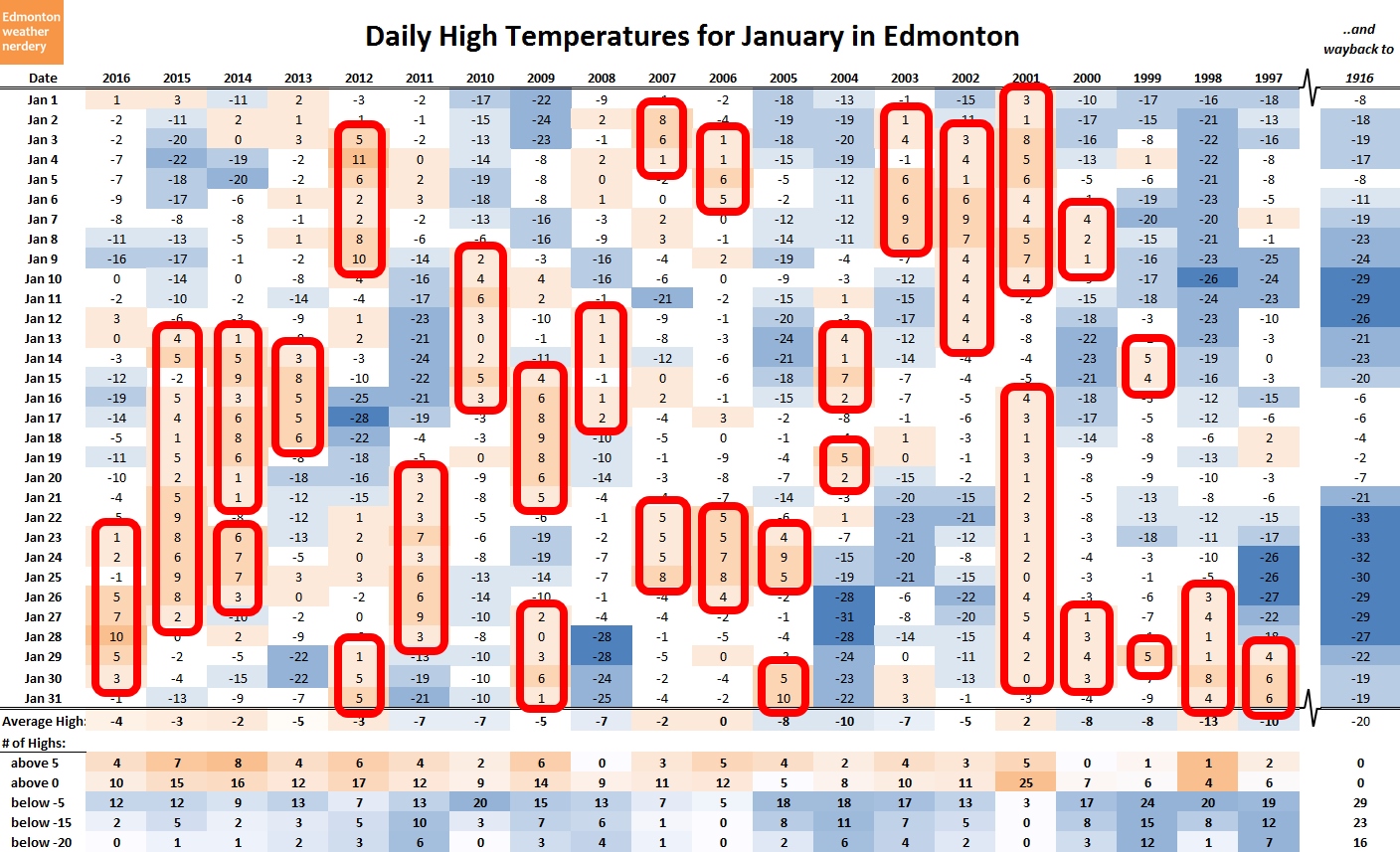
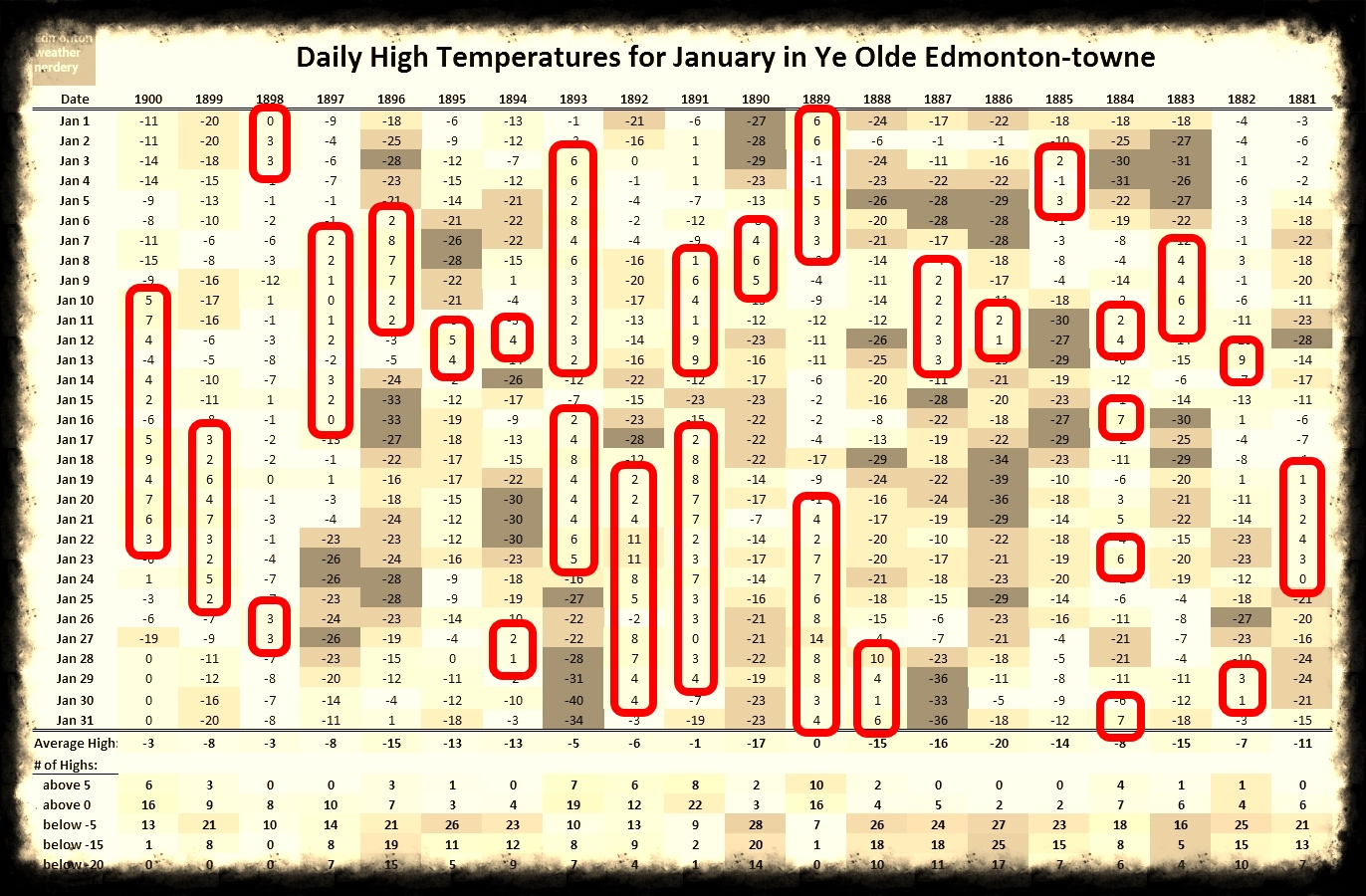
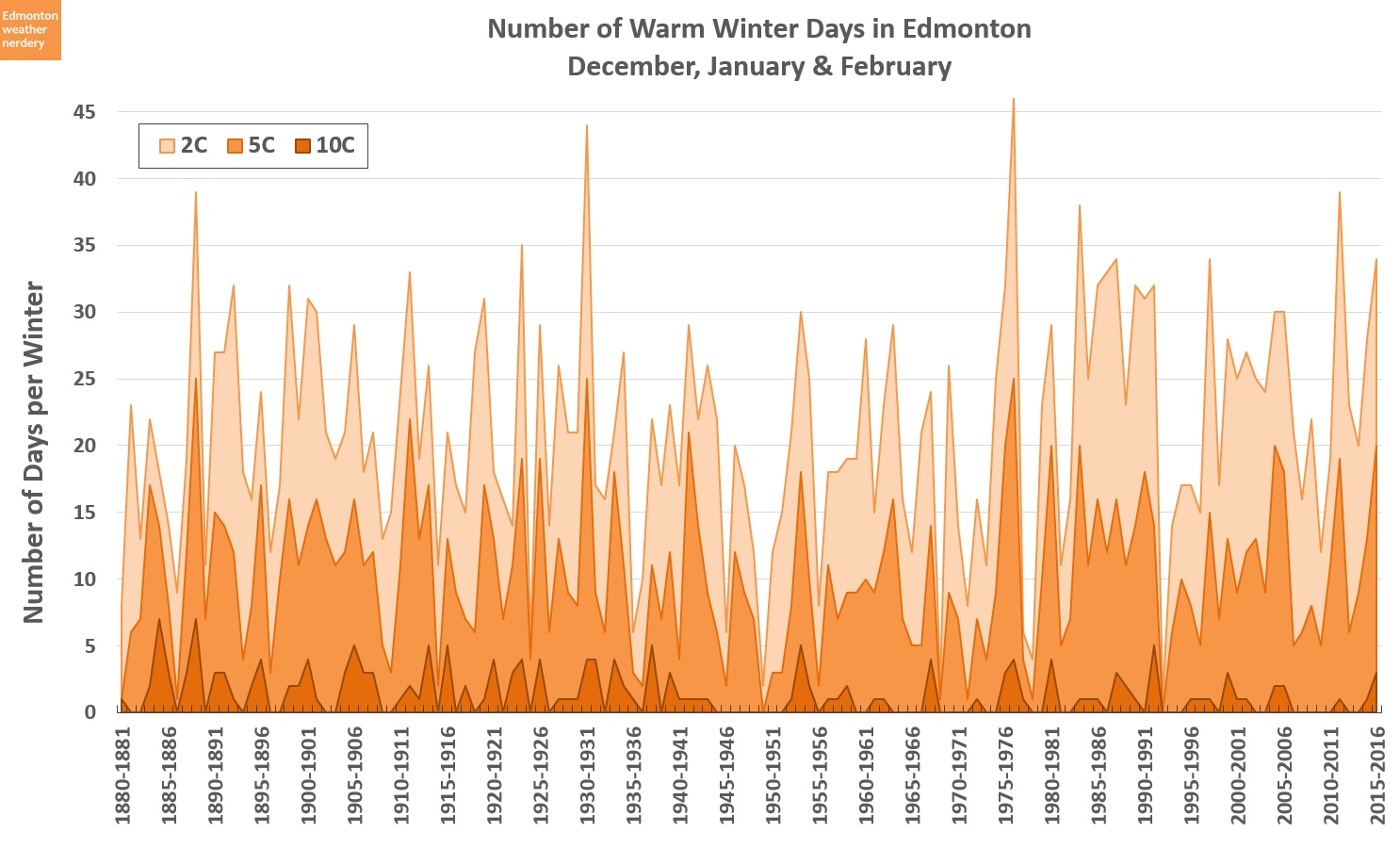
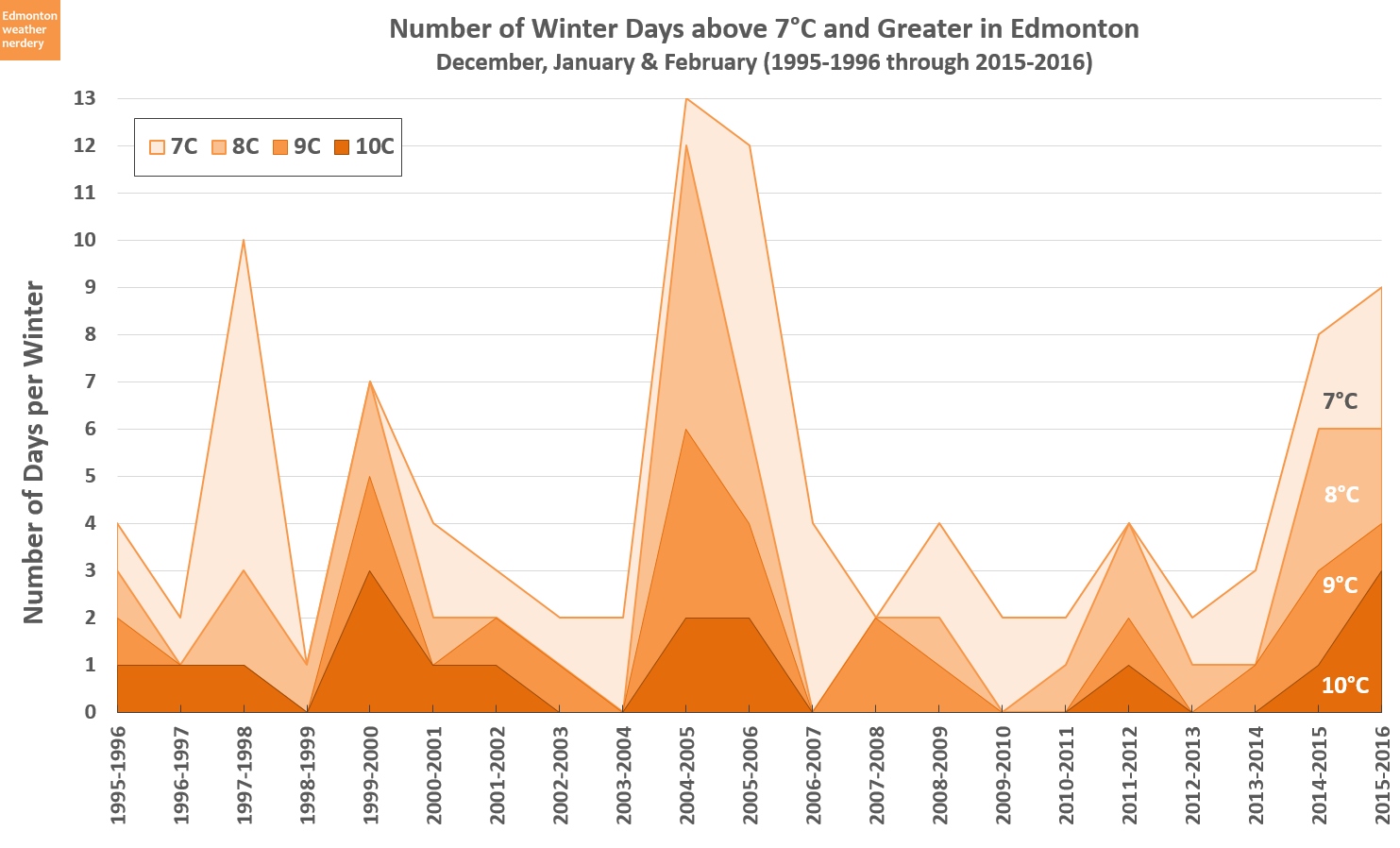
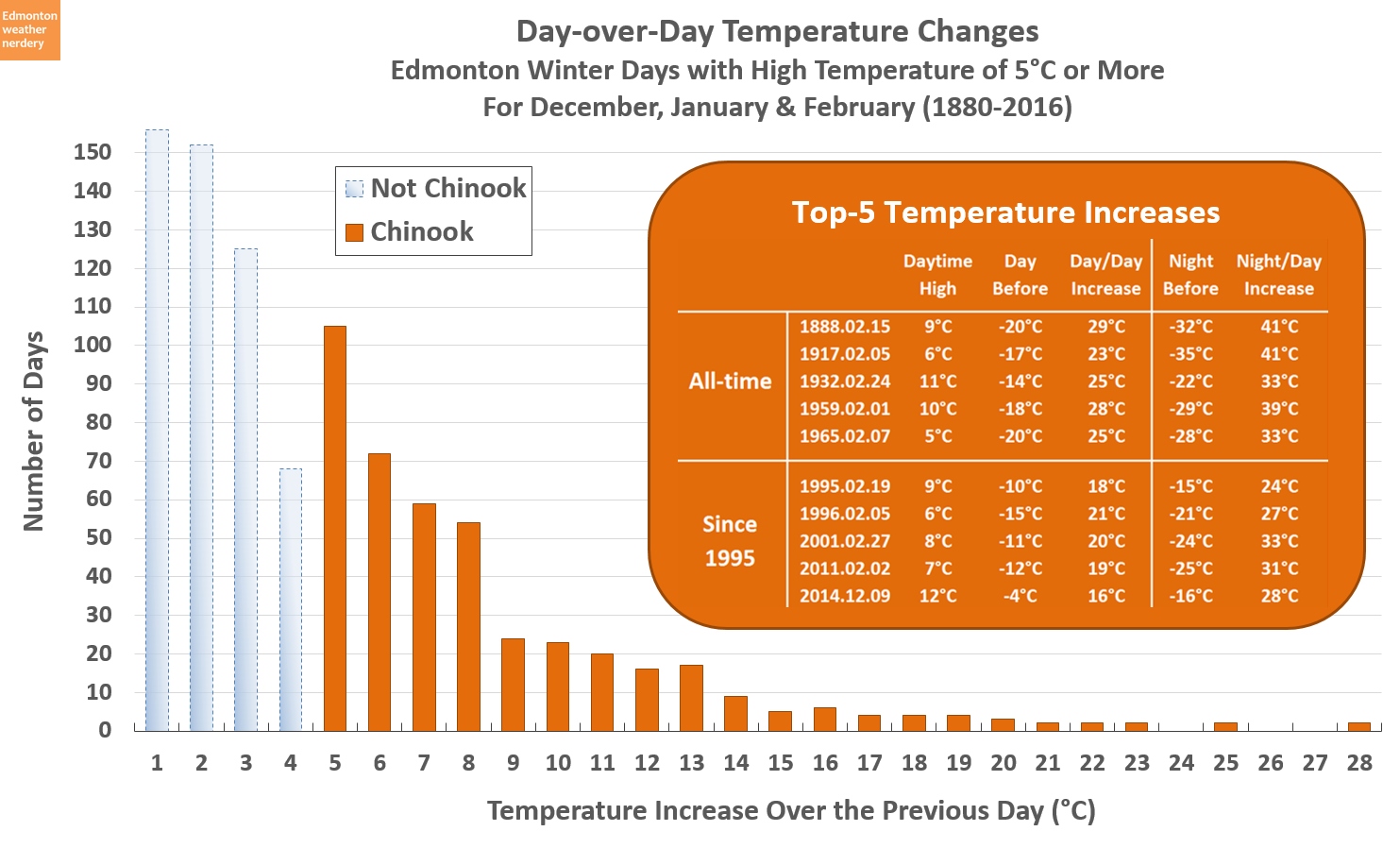

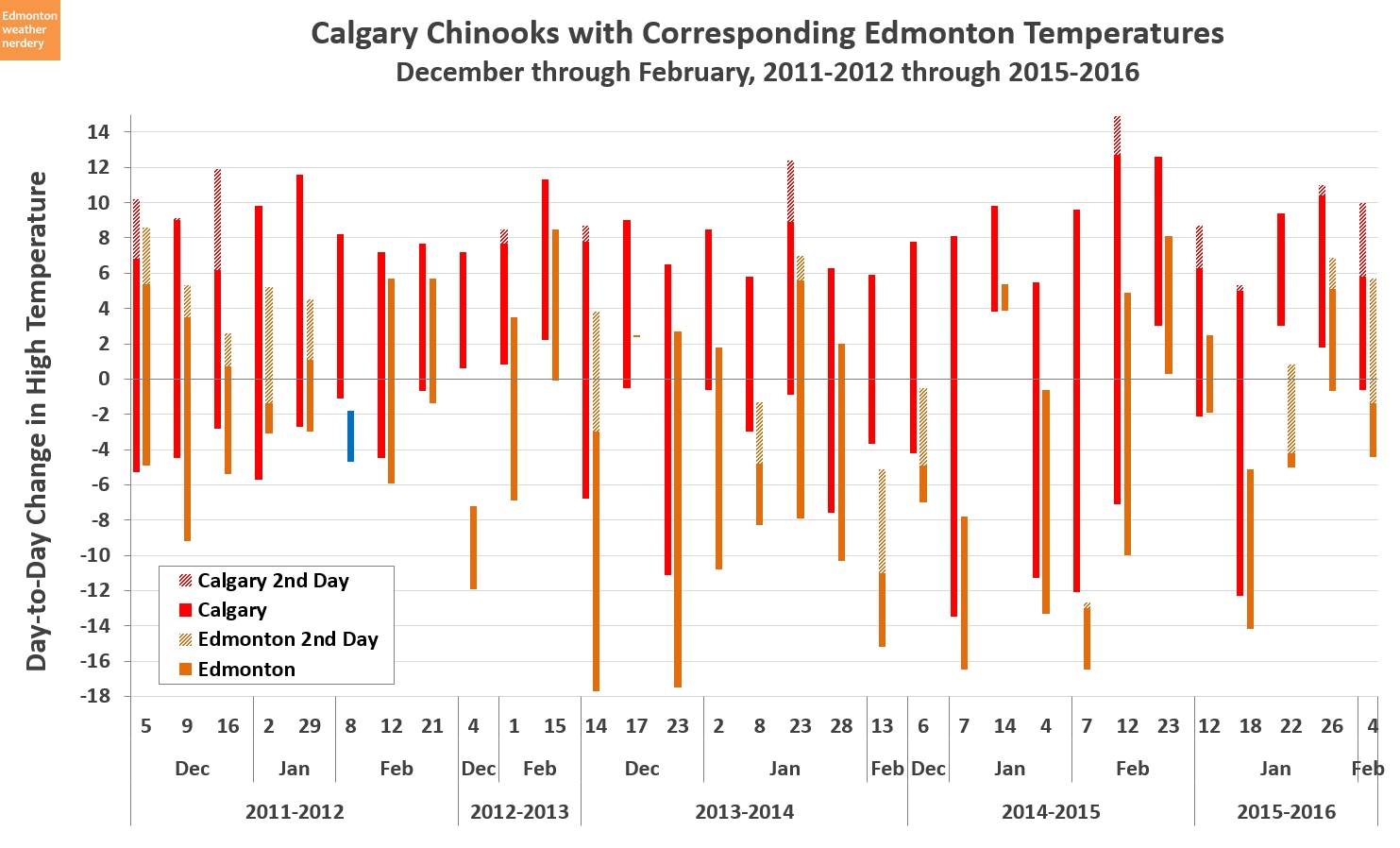
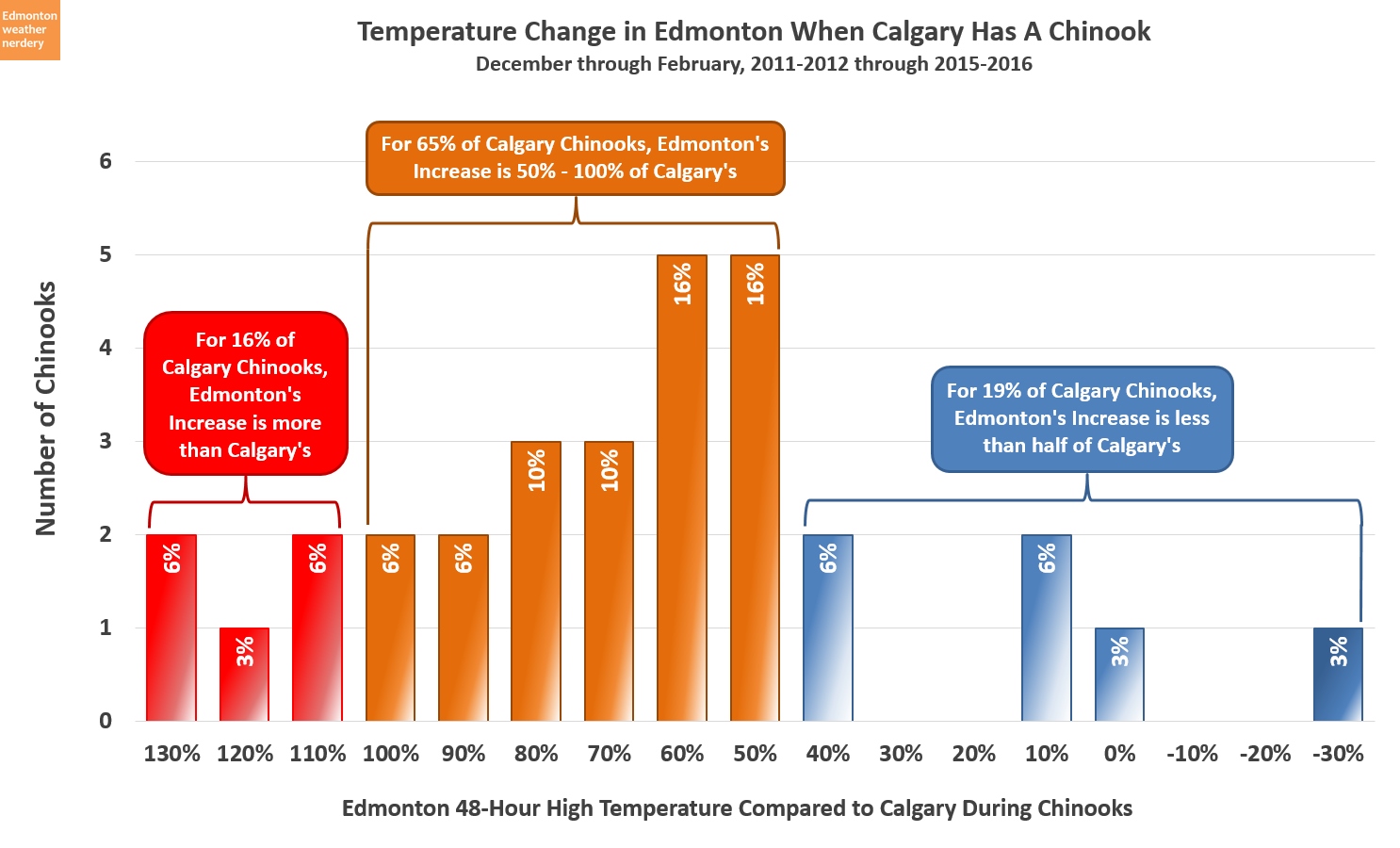
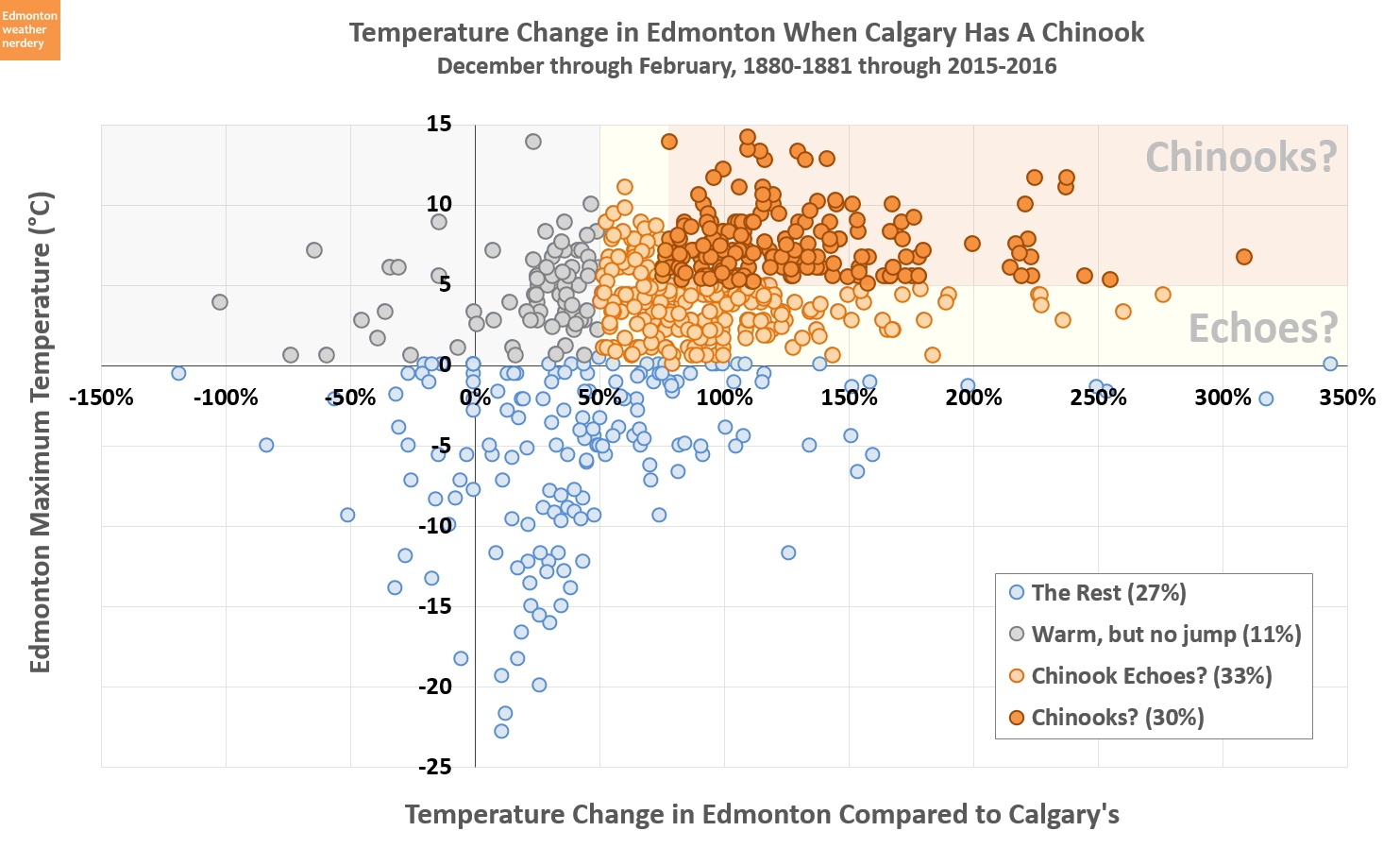
No comments:
Post a Comment